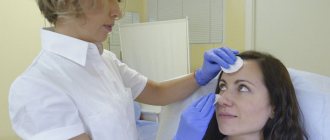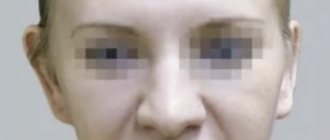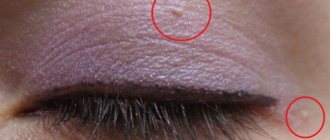Abdominal aesthetics is a separate, very sensitive issue for any woman. After all, a person’s stomach can look different. Its appearance depends on many factors. Among them are excess body weight, hormonal imbalances in the body, pregnancy, and aging of the skin.
Of course, it is women who most often have a dream for their figure to look slim and fit. A flat stomach is a goal for which the fair sex is fearlessly ready to trust a plastic surgeon. However, before such an operation, you should consider the possible risks and, of course, ask your doctor questions.
Not only women face problems in the abdominal area. Men are also no exception, but subjecting the body to grueling diets and heavy physical activity is definitely not worth it. Moreover, not all people are ready to spend time and effort on regular exercise. By the way, proper nutrition and exercise are not always suitable for postpartum restoration of a woman’s figure. Sometimes the only way to restore the belly to its former beauty and firmness is liposuction and abdominoplasty.
During the operation, based on indications, liposuction is performed in the following areas:
- waist;
- upper pole of the abdomen;
- sides
In this case, the surgeon achieves the rapprochement of the muscles by stitching them together. As for the lower abdomen, excess fatty tissue is removed from this area, moving the navel to its original location.
The liposuction method used during surgery allows:
- peel off skin;
- avoid tissues separating spontaneously.
Thanks to this tactic, doctors are able to minimize the risk of complications in the postoperative period.
Due to its popularity, abdominoplasty is perceived by many people as an ordinary procedure. However, this is a very serious operation. The surgeon must pay close attention to the individual characteristics of the individual patient. Lifestyle during the rehabilitation period is also of great importance. If we talk about postoperative risks, there are several of them. Let's talk about the main ones.
Edema
For example, in the early period after surgery, abdominal edema (or seroma) may appear. We are talking about the accumulation of lymph in the operating area. Typically, seromas form in the lower abdomen. When palpated, the liquid often flows from one side to the other. This phenomenon is explained by the fact that the subcutaneous space after surgery has empty zones. They communicate with each other, but then they heal and disappear. Seroma is a common phenomenon, but temporary, and there is no need to be afraid of it.
When a patient develops a seroma, the doctor’s task is to ensure that the subcutaneous cavities shrink as quickly as possible. For this purpose, several thin plastic tubes are placed under the skin. Each of them has a container at the end to collect liquid. The patient must wear a bandage that gently “presses” on the surgical area. This way the cavities will shrink faster and return to normal.
Abdominoplasty (tummy tuck): subtle nuances
Experts in the field of plastic surgery - Olga Dobryakova, MD, professor, plastic surgeon, and Alexey Nosov, plastic surgeon - spoke about the intricacies of tummy tuck or abdominoplasty operations. To illustrate the article, drawings and operation diagrams made by Olga Dobryakova were used.
Beautiful belly: modern ideas
Ideas about the beauty of the abdomen have undergone changes at different times and depended not only on geography, but also on the cultural standards of various social groups.
Although the anatomy of the human skeleton has remained virtually unchanged since the Upper Paleolithic period (40,000 years ago), the aesthetic ideals of soft tissue structure have undergone significant transformations. The changes in artistic canons are clearly evidenced by the works of sculptors of different centuries.
Modern belly beauty standards include a number of elements. First, the midline should look like a groove in the upper abdomen.
Secondly, the lateral borders of the rectus abdominis muscles should be visualized as ridges. In this case, starting from the edge of the costal arch, going down and connecting below the navel, a lyre-shaped line is formed. Further, the lower abdomen under the navel should not be flat, but slightly protruding. Along the mid-axillary line, the waist measures 7–10 cm and is located between the lower edge of the costal arch and the iliac crest.
The shape and relief of the abdomen are determined by the interaction of all its constituent structures - bones, muscles, aponeurosis, subcutaneous fat. Therefore, a modern aesthetic surgeon is faced with the task of performing abdominoplasty in such a way as to achieve maximum cosmetic results: remove excess skin and fat, eliminate defects in the aponeurosis of the anterior abdominal wall and, if possible, form a semblance of a waist.
Classification of cosmetic defects of the anterior abdominal wall
There are several classifications of defects of the anterior abdominal wall. Below we present two of them. So, for example A.A. Adamyan et al (1999) proposes to distinguish five groups of patients with abdominal wall defects:
1. Patients with cicatricial deformity of the anterior abdominal wall;
2. Patients with sagging skin of the anterior abdominal wall due to dermal dystrophy;
3. Patients with sagging and ptosis of the anterior abdominal wall;
4. Patients with severe ptosis of the anterior abdominal wall and diastasis of the rectus abdominis muscles;
5. Patients with combined deformities of the contours of the anterior abdominal wall: a skin-fat “apron” of the anterior abdominal wall in combination with ventral hernias, stretching of the skin of the anterior abdominal wall with pronounced stretch marks, cicatricial deformity, diastasis of the rectus abdominis muscles.
JM Psillakis et al. distinguishes six categories of patients with cosmetic abdominal defects.
The first category includes young nulliparous women with normal skin and muscle tone, but with excess subcutaneous fat, more pronounced in the area below the navel.
The second type of patients are people with excess skin in the lower abdomen who do not have stretching of the muscular aponeurotic layer. In some cases, these patients have excess fat in the infraumbilical area.
The third group of patients is similar to the second with the only difference being that these patients have stretching of the muscular aponeurotic layer in the hypogastrium.
Patients of the fourth group have slight excess skin, various abnormalities of adipose tissue, stretching of the muscular aponeurotic layer from the xiphoid process to the pubis.
The fifth group consists of patients with significant excess skin, various defects of the subcutaneous fat layer and diastasis of the muscles of the anterior abdominal wall.
The authors include in the sixth group of patients patients with significant excess skin only or mainly in the supra-umbilical area.
The division of cosmetic defects of the anterior abdominal wall into groups is important for choosing a surgical strategy for treating this pathology.
Reference points for a harmonious abdomen
There are proportions of the abdomen. So, the pubis should be shaped like an isosceles triangle with the apex down, with the sides ranging from 7 to 12 cm.
The distance from the navel to the pubis should be 10% less than from the xiphoid process to the navel. The navel should be slightly above the line connecting the iliac crests.
The navel should not be less than 10 cm from the pubis and never more than 13 cm from the upper edge of the pubis. The diameter of the navel should be about 2 cm.
The “ideal” lower edge of the incision for abdominoplasty is located 5 cm from the beginning of the genital fissure.
Surgical approaches for abdominoplasty
J. Joseph in 1931 described the approaches known to him for abdominoplasty.
The Watzel-Weisentren operation consisted of excision of a skin-subcutaneous fat flap along with the navel. The lower edge of the flap was located above the pubis, the upper - above the navel. The removed fragment of skin and subcutaneous fat was almond-shaped and extended laterally to the lateral surface of the body (Fig. 1).
The Küster operation is a vertical excision of the skin and subcutaneous fat while preserving the navel (Fig. 2).
Weinhold excised the skin in a trefoil pattern (Fig. 3).
Jolly, Thorek removed tissue in the hypogastrium using a horizontal approach without moving the navel (Fig. 4).
Abdominoplasty for cosmetic reasons began to be performed at the end of the 19th century. In 1899, Kelly excised a block of subcutaneous fat measuring 90x31 cm and 7 cm thick, weighing 7450 grams.
In the late 19th and early 20th centuries, surgeons performed excision of skin and subcutaneous fat. Some surgical approaches of that time have historical significance, others are taken as the basis for modern incisions for abdominoplasty.
F. Burian (1967) notes that at that time an incision was used along the suprapubic groove, sometimes a fusiform flap was excised above the navel, or crescent-shaped excisions of the skin above the pubis were made. In some cases, a spindle-shaped excision was performed at the level of the umbilicus, preserving the latter.
In cases of significant excess skin and subcutaneous fat, a T-inverted approach was performed.
In the time of F. Burian, surgeons performed not only tissue excision, but also dissection of the skin-fat flap over a large area.
Among the approaches that are mainly of historical significance, one can note such as the Galtier cross-shaped incision, presented in Figure 5.
The Castansres–Goethel T-shaped approach is used to a limited extent and is currently used in patients with significant excess skin on the anterior abdominal wall. This access is shown in Figure 6.
The Gonsalez-Ulloa incision is circular and eliminates excess skin and subcutaneous fat not only on the abdomen, but also on the back. Rice. 7a, b.
Using approaches like this, you can lift the abdomen, hips, buttocks, and back. Such operations are called “body lifting” (body lifting).
There are accesses in the inframammary folds. In this case, the skin-fat flap is pulled upward. The operation is called retrograde abdominoplasty (Fig. 8). This type of abdominoplasty can be used when excess skin and subcutaneous fat are predominantly localized above the navel.
The most cosmetic are the approaches, the scars from which can be hidden with underpants. There are several types of such access. Figure 9 shows the trapezoid approach.
Figure 10 illustrates the Butterfly wing approach.
Figure 11 shows the so-called Arch shaped approach.
Figure 12 shows the approach diagram for MV abdominoplasty. The upper cut is made in the form of the letter “M”, the lower in the form of the letter “V”. When the soft tissue of the upper flap is moved down, the entire suture takes on the shape of the letter “V”.
Surgical techniques for abdominoplasty
Aesthetic abdominoplasty may include steps such as excision of skin and subcutaneous fat, dissection of the subcutaneous fat flap, relocation of the navel or formation of a new navel, plastic surgery of the muscular aponeurotic layer of the anterior abdominal wall, as well as liposuction.
En bloc excision of skin and subcutaneous fat without flap separation or umbilical transfer was used in the late 19th and early 20th centuries. “In 1959, Dufourmentel and Mouly described the technique of low transverse lipectomy with transfer of the navel to a new location, and Mario Gonzalez Ulloa described the technique of circular lipectomy, then adapted by R. Vilain. In 1974, Elbaz developed a method of mini-abdominoplasty, which was followed by new developments of the “abdominal mini-lift”.
Liposuction began to be actively used in the 80s of the 20th century and made adjustments to the tactics of surgical treatment of cosmetic defects of the abdomen.
Liposuction is used as an independent method for removing subcutaneous fat in cases where there is no pronounced excess skin and the need for plastic surgery of the muscular aponeurotic layer of the anterior abdominal wall. The best fat suction results are obtained in patients with good skin turgor. In addition, after liposuction, especially of the superficial layers of subcutaneous fat, a skin contraction effect is observed. This property of this operation makes it more attractive than “classical” abdominoplasty in a number of patients.
Liposuction is also used as one of the stages of abdominoplasty. However, when combining skin excision and liposuction, the blood supply to the flap should be taken into account to avoid skin necrosis.
Excision of skin and subcutaneous fat may vary. For example, with mini abdominoplasty, a small almond-shaped area of skin and subcutaneous fat above the pubis is excised. With the so-called “classical abdominoplasty”, a section of skin and fat is removed, the lower border of which has the shape of an arc and is located between the projections of the anterior superior iliac spines, and the upper border is located above the navel.
In retrograde abdominoplasty, the upper incision is located in the area of the inframammary folds and connects in the midline of the torso. With this type of abdominoplasty, a deepithelialized flap of the upper abdomen is placed retromammary.
With the T-inverted approach, the skin and subcutaneous fat are excised both vertically and horizontally. With vertical approaches, the skin and subcutaneous fat along the midline of the abdomen are excised. Tissue dissection may vary in extent and is carried out in different layers.
“Classical” dissection is performed in the layer between the subcutaneous fat and the aponeurosis of the anterior abdominal wall. With “traditional” abdominoplasty, the separation boundaries extend from the level of the lower horizontal incision above the pubis to the costal arch. Extended dissection is capable of capturing the lateral surfaces of the body and extending to the submammary folds. Dissection during miniabdominoplasty can be small and sometimes does not reach the level of the navel.
The layer of dissection of the skin-subcutaneous flap, familiar to many generations of surgeons, has recently become less common. So, for example, V.I. Korepanov (1996) reports on a new abdominal plastic technique proposed by Le Louarn. When performing this operation in the lower abdomen, tissue dissection is carried out to the superficial fascia. In this layer, dissection is performed to the level of the navel, and then the author deepens the level of separation and performs a detachment above the aponeurosis. IN AND. Korepanov notes that in this case, the arterial blood supply and venous drainage of subcutaneous tissues are less affected.
Currently, dissection using a liposuction cannula is popular. In this case, the subcutaneous fat flap becomes thinner due to fat suction and a significant number of perforating blood vessels are preserved.
Plastic surgery of the navel and periumbilical area
When abdominoplasty involves the removal of significant amounts of skin and subcutaneous fat, it becomes necessary to move the navel. In this case, the navel is not separated from the aponeurosis of the anterior abdominal wall. The navel funnel is sewn into the hole on the upper skin-fat flap, which is pulled down.
There are several ways to sew in a navel. The navel stump can have different shapes. A circle, an oval with the largest horizontal diameter, an almond shape are the types of cutting off the navel stump used. There is a technique in which the lower edge of the funnel is cut radially to the navel nipple, while a corresponding hole in the form of a circle with a skin wedge in the lower part or in the form of the letter “Λ” is cut out in the upper flap. This method ensures the maximum similarity of the sewn-in navel to the natural one and prevents peri-umbilical scarring.
C. Le Lonarn and co-authors perform de-epithelialization of the recipient navel in the shape of a “heart”, then perform a vertical dissection of the skin, while the navel funnel has the appearance of an oval with the largest vertical diameter. The authors begin sewing in the navel at the points corresponding to 3 and 9 o'clock.
If the navel is deformed or absent, it may be necessary to form a new navel, which is not an easy task, since the natural navel has complex architecture. The skin of the navel area is devoid of a subcutaneous fat layer and is fused with the scar tissue covering the umbilical ring. Preperitoneal tissue is also absent and the peritoneum around the circumference of the umbilical ring is fused to the scar.
The umbilical fascia, described by Richet, is part of the fascia endoabdominalis. In some cases, it is a more or less powerful plate with transversely running fibers interwoven into the posterior plate of the rectus muscle sheath, in others it is very weakly expressed. The peritoneum is located posterior to the fascia. In the outer navel there are: a peripheral cutaneous corolla, which indicates the place where the fat layer ends (the thicker this layer, the deeper the navel); the umbilical groove, which at the bottom of the umbilical fossa surrounds the so-called nipple (it corresponds to the attachment of the skin and superficial fascia to the circumference of the umbilical ring); nipple - a skin stump protruding forward and corresponding to the scar at the site of the umbilical cord falling off.
A number of techniques are offered for neoumbilicoplasty. The goal of all methods is to form a truncated cone and fix its apex to the aponeurosis of the anterior abdominal wall. The skin in the area of the new navel is freed from subcutaneous fat.
Various local plastic surgeries are offered to form a skin funnel. For example, F. Burian (1967) describes two ways to restore the navel.
The first way is as follows. A semicircular area is outlined along the edges of the wound on both sides so that the total diameter of the circle is 1.5 cm. Then subcutaneous fat is removed from these areas of the skin. When suturing the edges of the wound in these places along the midline, the aponeurosis is captured. As a result of this, the skin outlined in a circle is pulled inward (Fig. 13a, b). A subcutaneous purse-string suture is placed around the resulting depression for 10 days.
Another method of operation according to F. Burian differs from the first in that a circle of skin is left on one side of the wound, from which fat is removed. Then it is sutured to the aponeurosis using mattress sutures. A corresponding notch is cut out on the other edge of the wound. The surrounding areas are tightened with a purse-string suture (Fig. 14a, b).
F. Otteni (2006) describes several methods of neoumbilicoplasty. In this case, skin incisions are made within the navel and form three or four flaps (Fig. 15a, b).
The fat in the area of the new navel is removed and the skin is sutured to the aponeurosis of the anterior abdominal wall. A skin fold is formed in the upper part of the navel (Fig. 16).
In cases where the navel is not moved, the peri-umbilical approach can be used to suture the rectus abdominis muscles with diastasis (Fig. 17).
During abdominoplasty, which is accompanied by traction of the skin-subcutaneous flap down above the navel, excess skin may form. HF Hönig suggests performing a crescent-shaped excision of excess skin along the upper semicircle of the umbilical funnel. The width of the excised area of skin is about 1 cm (Fig. 18).
In the presence of supraumbilical folds and striae, skin excision and diepidermization are proposed (Fig. 19).
Different directions of traction (tension) of the skin-subcutaneous fat flap during abdominoplasty
With a horizontal approach in the lower abdomen, traction of the flap is performed downward (Fig. 20).
With the so-called tension-lateral abdominoplasty, traction of the flap is carried out predominantly in the lateral direction (Fig. 21).
Retrograde abdominoplasty is accompanied by pulling the flap upward (Fig. 22).
The T-inverted approach is associated with the movement of skin-fat flaps, both in the medial directions and downwards (Fig. 23).
With vertical approaches, the skin-subcutaneous fat flaps are moved in the medial direction (Fig. 24).
When performing periumbilical incisions, traction of the flap is carried out towards the umbilicus.
Types of lipectomy
With abdominoplasty, subcutaneous fat can be removed en bloc along with the skin (dermolipectomy). In some cases, subcutaneous fat is removed by liposuction, and then excess skin is excised. The advantage of the second method is the preservation of perforating vessels feeding the skin flap. A combination of these methods is also used.
Methods of plastic surgery of the muscular aponeurotic layer of the anterior abdominal wall during abdominoplasty
The muscular aponeurotic layer of the anterior abdominal wall can have various congenital and acquired defects. Numerous types of hernias, muscle diastasis, thinning, stretching of muscles, fiber disintegration of the aponeurosis, involution of all layers of the anterior abdominal wall, as well as the consequences of various injuries and developmental anomalies require correction during cosmetic abdominoplasty.
In patients with cosmetic defects of the anterior abdominal wall, all types of abdominal hernias can occur.
According to the method of formation, hernias are divided into congenital and acquired, according to the place of exit they are divided into: 1 - inguinal, 2 - femoral, 3 - umbilical, 4 - hernias of the white line and tendon jumpers of the rectus abdominis muscles, 5 - lumbar, 6 - obturator, 7 - ischial and 8 – perineal. In addition, hernias are reducible, irreducible, with the phenomenon of coprostasis, with the phenomenon of inflammation, and strangulated.
For hernia repair, general surgical techniques are used. Most often, the presence of a hernia is determined during a preoperative examination. However, in some cases, the hernia is detected intraoperatively. This is observed more often in obese patients with a large thickness of subcutaneous fat. The presence of a hernia can pose a serious danger during liposuction due to the possibility of damage to the hernial sac and its contents by the cannula.
Plastic surgery of the aponeurosis of the anterior abdominal wall for hernias is performed both with local tissues and with the use of various grafts (auto- and allo-skin) and mesh implants (mesh of polypropylene, vicryl, titanium nickelide, etc.). General surgery deals with this section in detail. We will consider only some methods of plastic surgery of the muscular aponeurotic layer of the abdomen, which are elements of aesthetic abdominoplasty.
Plastic surgery of the aponeurosis of the anterior abdominal wall along the midline
This operation involves bringing together the rectus abdominis muscles by suturing the anterior layers of their vaginas. The indication for plication of the aponeurosis in the area of the rectus muscles is not only their diastasis, but also a decrease in muscle turgor. With laxity of the anterior abdominal wall in the profile projection, the abdomen protrudes forward, an arch is formed between the xiphoid process and the pubis.
The purpose of plication is to reduce the lateral projection of the abdomen. Plication can be performed with continuous, separate interrupted, “U”-shaped sutures using strong non-absorbable sutures. One or several rows of sutures are applied (Fig. 25a, b).
Shepelman method
Shepelman’s method for spherical protrusion of the abdomen, described by N.A., is also known. Bogoraz in 1949.
In cases where the stomach, due to insufficient tension in the muscles of the abdominal wall, protrudes into a spherical shape, although without a fatty apron, which is often found in thin women, Shepelman suggests the following technique.
The incision is made in the form of an ellipse, covering the entire abdomen - from the xiphoid process to the pubis. After removing the skin along with fat up to the aponeurosis, the anterior sheath of the rectus abdominis muscle is opened on both sides with a longitudinal incision along its entire length, and both flaps are separated outward. The middle section of the rectus tendons is sutured with its edges above the linea alba, which is set inward. Both rectus muscles are connected with sutures above the inward and stitched linea alba, and the external flaps of the aponeurosis of the rectus muscles are wrapped one after the other and also stitched (Fig. 26).
The same author proposed a surgical technique for large saggy bellies with a fatty apron, which consists of the following. After removing the apron, the aponeurosis of the external oblique muscle is cut in an arcuate manner across the entire width of the abdomen on the right and left. This aponeurotic flap is separated, partly bluntly, partly sharply, from the muscular layer far downwards and, when the abdomen is pulled up, lies on the upper part of the aponeurosis, as if folded upward, stitched to its surface and attached to this surface with a series of retaining sutures. The rectus muscles, which have become too long, are first folded into a transverse fold and fixed in this form with sutures (Fig. 27).
Technique for moving the external oblique abdominal muscles forward according to JM Psillakis (1991)
Surgical dissection of the external oblique muscles is important to restore waist size, which increases during pregnancy, and to give the abdomen a more natural, natural shape.
The internal obliques can also be used, but this does not produce significant results since they are very small.
In order to isolate the external oblique muscles, small incisions are made along the lateral edge of the rectus muscles in the lower abdomen and the space between the aponeuroses of the external and internal oblique muscles is found.
By performing blunt or sharp dissection, we can easily find the avascular space between these muscles. The inner edge of the aponeurosis of the external oblique muscle is separated from the lateral edge of the rectus muscle. The external oblique muscle, together with its aponeurosis, stands out quite widely at the top to the ribs and at the bottom to the pubis. Thus, we obtain muscular aponeurotic flaps with an edge in the form of curves, convex sides, which are directed towards the midline. Rice. 28.
Laterally, the dissection of the external oblique muscle should reach the anterior axillary line, where the muscle branches into several pedicles. You need to be careful to avoid damaging them.
The separated flaps are moved medially and sutured over the aponeurosis of the anterior abdominal wall. The first sutures are placed at the navel level on both sides. Sometimes the external oblique muscles are so overstretched that when they are moved medially, they come out on opposite sides of the abdomen; in these cases, they are sutured symmetrically with an “overlap”. After a series of sutures are placed, the external oblique muscles lie more superficially than the rectus muscles. This operation significantly reduces waist size (Fig. 29).
Extended mobilization of the external oblique muscle according to Appiani (1991)
The separation of the external oblique muscle is performed laterally to the mid-axillary line at the level of the lower ribs between the 10th and 11th perforating branches of the intercostal nerves. Muscle flaps are separated from the internal oblique muscles.
The inner flap is sutured to the outer flap using fixing sutures along the line of the costal arch. The second row of sutures is placed parallel to the first. The edges of the outer flap are fixed with continuous sutures. The location of the sutures can vary depending on the stretching of the muscles and in most cases the flaps are applied and sutured to the aponeurosis above the rectus abdominis muscles.
Plastic surgery with a muscle flap in the form of a belt
With this type of plastic surgery, a flap is cut out from the external oblique muscle in the form of a belt. Laterally, the flap is separated to the mid-axillary line and contains branches of 10-11 perforating and intercostal nerves.
The flaps are cut along the direction of the fibers of the external oblique muscles.
The flap can contain only the external oblique muscle with its aponeurosis (Appiani method) or also the anterior layer of the rectus sheath (Delfino-Appiani method).
The muscle flaps are moved medially and sutured below the umbilicus like a belt. Donor muscle areas are sutured. The operation may be accompanied by plication of the aponeurosis of the anterior abdominal wall along the midline (Fig. 30, 31).
There is also a method in which a wide dissection is carried out, from the costal arch to the pubis of the external oblique muscles along with part of the anterior layer of the rectus sheath. The flaps are sewn together with an overlap. A duplication of the rectus and oblique muscles is formed. This technique is performed in two versions - with preservation of the navel in its old place and with removal of the navel and its subsequent reconstruction.
Method of transverse plication of aponeurosis according to A. Marques
After abdominoplasty, you can often see the epigastric area protruding forward due to excess skin and fatty tissue. This forces the dissection to be expanded to the edges and behind the costal arch, although such expansion is not accompanied by a radical effect.
To eliminate this drawback, A. Marques and co-authors proposed their own method. The authors perform plication of the aponeurosis in the epigastrium - horizontally and along the midline - vertically. As a result, the line of sutures on the aponeurosis corresponds to the letter “T” in shape. The plication begins with a suture that connects together the intersection point of the vertical and transverse lines and the midpoint of the upper edge of the transverse ellipse. Subsequent sutures are then placed between the marked lines until the vertical and horizontal plications are completed (Fig. 32).
The authors found that transverse plication of the aponeurosis displaces the skin flap downward by an average of 3 cm. As a result, plication leads to depression of the epigastric region along the midline.
Complications of abdominoplasty
Since abdominoplasty can be performed in different volumes - from the removal of a small strip of skin in the lower abdomen to the excision of tissue masses weighing 10 kg or more, the stages of the operation can include manipulations of varying degrees of trauma (liposuction, plication of the aponeurosis, dissection and relocation of muscles), then surgical risks can vary widely depending on the type of surgery.
The patient’s overall health condition and local tissue characteristics also play a significant role in the outcome of abdominoplasty.
General surgical principles for selecting patients for elective operations are followed, but when it comes to cosmetic surgery, the limits of contraindications increase. After all, we need not only to prevent surgical complications, but also to obtain a satisfactory cosmetic result. Issues of contraindications and risks should be discussed with the patient before surgery.
Complications include general surgical ones, complications related to pain relief, and cosmetic ones.
The most common complication after major abdominoplasty is seroma, less commonly hematoma. Fat emboli and thromboembolism occur.
An extremely unpleasant complication is necrosis of the skin and subcutaneous tissue. In connection with the recently popular so-called combined abdominoplasty, in which tissue excision and liposuction are performed, the threat of ischemia of the upper skin flap increases.
The dangers of combined intervention Illouz include: an increase in the number of seromas, hematomas, infections and necrosis of the flap; increased risk of thromboembolism and fat embolism. It is important that increasing the intensity of individual stages does not add up, but multiplies the risk of complications.
To perform such complex and traumatic operations as combined abdominoplasty with liposuction, a very strict selection of patients is necessary.
E. Dillerud, who performed more than 300 combined abdominoplasties and aspirations on apparently healthy patients, excluded patients with obesity, diabetes, smokers, severe cardiac and respiratory diseases, and a history of thromboembolism.
Contraindications for Ohana included moderate and severe hypertension, diabetes, and a body mass index exceeding 32 kg/m2. Smokers were required to quit smoking at least 2 weeks before surgery.
The cornerstone of success in patient selection should be the criterion: “operate only on healthy patients.”
Cosmetic complications include pathological scars (hypertrophic, atrophic, keloid), incorrect position of the navel, asymmetry or too high location of the scar, asymmetry of the abdomen, “dog ears” - excess soft tissue at the lateral edges of the scar, uneven skin texture and subcutaneous fat.
Conclusion
Although abdominoplasty has been around for over 100 years, the surgery has evolved. New technologies in surgery, such as endoscopic methods, fat suction, and the use of mini-approaches, are now used in abdominoplasty. Both in aesthetic surgery in general and specifically in abdominoplasty, special attention is paid to artistic anatomy. Detailing the “ideal” location of the navel and postoperative scar becomes important in the cosmetic result of the operation.
*Bogoraz N.A. Reconstructive surgery. Medgiz, 1948 – M. T II, Part 1. p. 137-142
Hematomas
Another complication is hematomas (or bruises). They appear in the early period after surgery, almost immediately, but can also occur on the first day after abdominoplasty. Over time, in the absence of other complications, they disappear without a trace.
If the patient's blood pressure is high or blood clotting is impaired, there is a risk of postoperative bleeding. The empty spaces left after the surgeon removes tissue accumulate blood. In such cases, the doctor decides on emergency treatment.
It is possible to reduce the risk of this complication. To the patient:
- drugs that increase blood clotting are injected into a vein;
- Wearing compression garments is recommended.
Physical activity should also be excluded.
Disturbances in the formation of scar tissue
After abdominoplasty surgery, the suture can develop into one of four types of scars:
- normotrophic,
- atrophic,
- hypertrophic,
- keloid.
Normotrophic, as the name implies, is considered a normal result. Such a scar is hardly noticeable against the background of the epithelial cover and is sensitive.
Atrophic are the result of a slowdown in collagen synthesis. They are light in color, lack sensitivity, located below the level of the skin, as if “pulled in” inside. Hypertrophic ones, on the contrary, seem to protrude above the epithelium, have a noticeable tint and uneven edges. The reason for their appearance is excess collagen against the background of sprains, inflammation and other problems during the rehabilitation period.
Types of scars: a - atrophic, b - normotrophic, c - hypertrophic.
A keloid scar is the most unpleasant defect of all. The formation of keloid scars is possible due to unfavorable conditions during healing. The tendency to form keloid scars is also a congenital feature of some patients. But keloid-type scar tissue is an extremely rare complication of surgery.
Slow healing
For one reason or another, postoperative wounds sometimes heal slowly. Where the seam is located, the skin turns blue and a crust forms. Slow wound healing occurs:
- if during the operation the surgeon greatly stretched the skin;
- if the patient is a heavy smoker;
- due to individual characteristics of blood flow.
In case of deep tissue necrosis (this rarely happens), the doctor corrects the secondary scar area in order to improve the aesthetic appearance of the patient’s figure.
Rough scarring
Scars from incisions, of course, always remain. The scar is located below, in the bikini area. As for its length, it depends on how much excess tissue the surgeon removed during the operation. In any case, when choosing one or another technique, doctors take into account the patient’s initial condition, discussing with him in advance questions about the length and location of the incision.
During the first three months after abdominoplasty, the scar has a dense structure. It is pink in color, gradually thins out, brightens, and after a year there will be nothing left of it except a thin strip.
The formation of flat scars that “tighten” the skin occurs within two months. During this period, patients complain of the following problems:
- unevenness;
- compaction;
- numbness.
This is quite natural, but in order for the scars to soften faster and the blood supply to improve, it is recommended to attend physiotherapeutic procedures, for example, UHF or microcurrent.
4. Complications
Abdominoplasty can overload the circulatory system and sharply increase intraperitoneal pressure, as a result of which serious disorders can develop, including pulmonary edema.
Inactivity and physical inactivity during the recovery stage (it takes from several weeks to several months) are fraught with various congestive phenomena, the further progression of which can result in pneumonia or pulmonary embolism.
Finally, one of the most dangerous and severe complications is intra- or postoperative infection of the surgical field. Here the prognosis becomes uncertain, and the situation may get out of control - at least it requires urgent intervention and an intensive antibacterial response.
Fortunately, in modern and well-equipped clinics, the percentage of severe complications can be minimized, but in no medical institution and under any price list will it be zero. Therefore, it is worth recalling once again: abdominoplasty is a complex abdominal operation, the need for which should be dictated by the proven ineffectiveness of all other procedures and methods in a given individual case, the absence of contraindications and a reasonably high probability of achieving the desired results.
Loss of sensation
During abdominoplasty, the surgeon changes the position of its tissues. This often affects a number of small nerves. Usually the nerve endings in the abdomen and upper thighs are affected. During the first time after surgery, patients complain that sensitivity in these areas is reduced.
There may also be a feeling of numbness, which is aggravated by a combination of liposuction and skin tightening. It is accompanied by a feeling of “goosebumps” or “burning”. This phenomenon means a gradual restoration of sensitivity and disappears about a year after the operation, in some cases earlier.
Indications and contraindications
Abdominoplasty is a fairly serious surgical procedure. Its implementation, unlike many cosmetic procedures and minor operations, is possible only if there are certain indications. Basically, abdominoplasty is recommended for the following pathologies:
- Diastasis. Many young mothers are faced with the problem of “pregnant” forms after childbirth, which are not eliminated with the help of physical activity and diets. The cause is stretching of the abdominal muscles along the white line. Only tummy tuck will help eliminate it.
- Dramatic weight loss. I recommend surgical correction to those who have lost a large percentage of excess weight. If you have suffered from obesity for a long time and have suddenly lost weight, it is often not possible to notice this externally due to the large number of folds. Removing excess skin and fat will demonstrate your efforts aimed at creating an ideal body.
- Presence of a hernia. Classic abdominoplasty is used to suture the hernial ring with tightening of soft tissues and preserve the navel.
Attention! Extreme obesity is not an indication for which a visit to a surgeon is practiced. This condition is often the reason for refusal of surgery.
In Moscow, I spent more than 50,000 hours in the operating room, and sometimes I have to refuse people surgery. Any surgical manipulation will be dangerous if the following conditions are detected:
- diseases of the cardiovascular and nervous systems;
- neoplasms;
- diabetes;
- inflammatory processes of a systemic or local nature;
- pregnancy and childbirth;
- blood clotting disorder;
- immunodeficiency states.
It is worth remembering that the possibility of prompt action is determined individually. At the initial consultation, I listen to the patient’s wishes, conduct an examination, collect anamnesis and prescribe a list of necessary diagnostic procedures:
- urine and blood tests;
- Ultrasound of the abdominal organs;
- fluorography.
I always offer the most optimal method of performing an operation, because I understand that each situation requires an individual approach.










